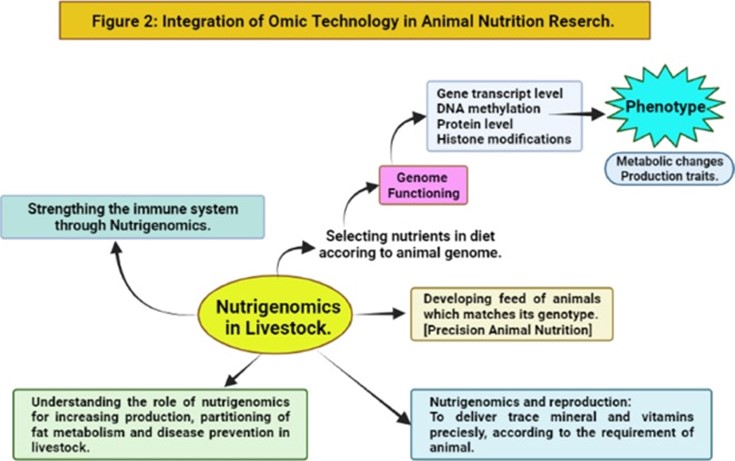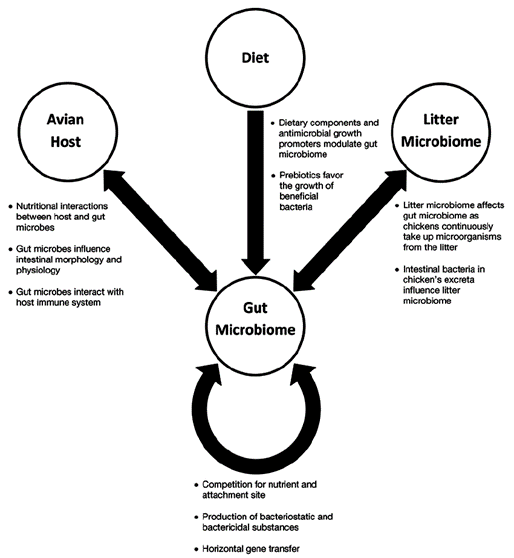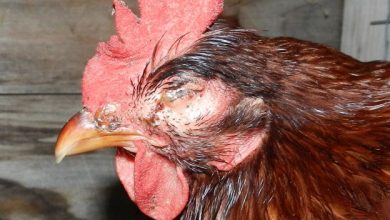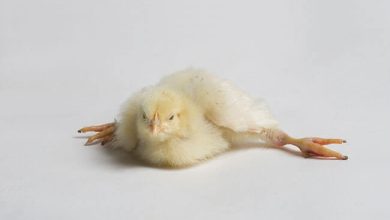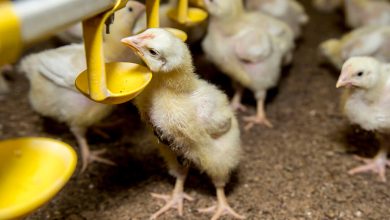POULTRY NUTRIGENOMICS DIET-GENE INTERACTIONS
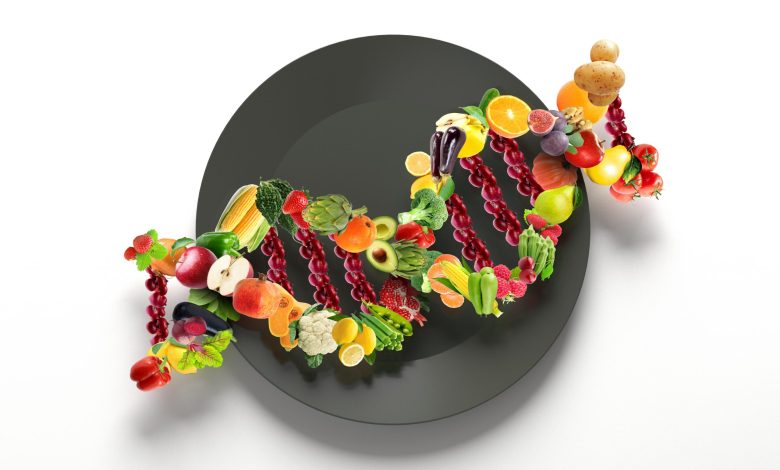
POULTRY NUTRIGENOMICS : DIET-GENE INTERACTIONS
Dr.Partha P. Biswas,Former Associate Professor,
R.K.Mission V.C.College, Kolkata 700118
Senior Consultant, Medivin Pharmaceuticals,Hyderabad 500070
As with the correlation of nutrition and genetics, nutrigenomics has become essential to the production of poultry.It aids in enhancing bird performance, feed effectiveness, better health and meat quality. Let’s look at molecular biology first before diving into nutrigenomics. Every animal has a genome, which is the fundamental blueprint for life and contains all of the DNA that makes up the animal. These expertly crafted molecules serve as models for how animals should live.The expression of this genetic information or how this blueprint is read, however, can be significantly influenced by outside factors like diet. Exploring the connections between nutrients and genes is the focus of nutritional genomics, a field that combines nutrigenomics and nutrigenetics.Nutrigenomics is the study of how dietary components and biologically active foods influence an animal’s or a person’s gene expression.
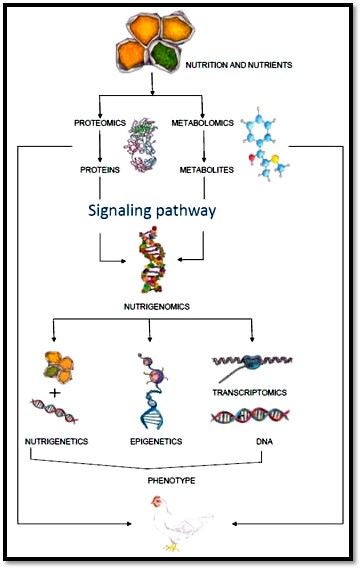
The body’s response to food is determined by “nutrigenetics,” which is based on genetics.To put it another way, nutrigenetics holds that a animal’s response to bioactive food ingredients.This is influenced by animal’s genetic profile because it changes how those ingredients are processed, absorbed etc.It looks at genetic changes in DNA called polymorphisms or SNPs (single nucleotide polymorphisms). Each SNP is a variation in a single nucleotide, the basic unit of DNA. Millions of SNPs can be found using next-generation sequencing technologies (NGS), which also offer a way to measure their variance.
Patterns of protein expression, metabolite synthesis, and gene expression known is as “nutritional signatures” appear in response to specific diets.It is a young field of study that aims to comprehend how dietary elements affect the genome, transcriptome, proteome, and metabolome. It is now believed that nutrients are signals that are picked up by a cellular sensor and regulate the expression of genes and proteins to produce metabolites.Functional genomic methods have long been praised for their enormous potential to advance nutritional science by uncovering previously unknown diet-gene interactions and facilitating the creation of brand-new nutritional indicators.Accurate genetic testing methods are constantly developing to the poultry production process can improve the expression of various genes involved in immunity, growth, metabolism and antioxidants (M.Alagawany et al., 2022).
WORLD IS HUSTLING ON ACHIEVING SUSTAINABLE AND HEALTHY FOOD SUPPLY GOALS
As we work to achieve the Sustainable Development Goals of the United Nations – no poverty, zero hunger, good health and well-being, quality education, climate action, ecosystem management – the poultry industry is positioned to be a growth driver and must make significant strides. This will pave the way for a better future for the industry, societies, and the planet. Over the past twenty years, the sector in India has seen a paradigm transformation in both structure and operation. With the advent of significant food processing firms and the deployment of contract poultry raising, it has evolved from a small backyard activity into a significant commercial industry. The industry is significant in India since it not only contributes to the sustainable development of but also produces egg & meat for human use. Future developments in nutrition genomics is set to offer enormous promise because they have made dietary changes and a whole new universe of disease understanding and prevention possible.
DIET–GENE INTERACTIONS
When nutrients and nutraceuticals ( food supplements with additional health benefits ) are used in the production of poultry, the gene expression of various genes related to health, metabolism, growth, immunity, and antioxidants may be targeted. Numerous dietary components have been shown to affect gene expression.
They might act, for instance,affecting the quantities of substrates or intermediates, acting as ligands for transcription factor receptors, or changing signal transduction pathways. For instance, broiler supplementation with vitamin E is known to increase meat quality and shelf life while also having an antioxidant effect. Heat stress increases oxidative stress in liver tissue and decreases the immune response of laying hens, which can result in a number of disorders.As shown by the upregulation of CAT, SOD, and GPx genes(antioxidant-related genes), the addition of vitamin E to diets high in selenium significantly increase antioxidant enzyme levels (Elgendey et al.,2022).
Antioxidants help to neutralize harmful free radicals in bodies..Shakeri et al.’s (2020) research demonstrates that supplementing the staple diet with 200 mg/kg of vitamin C and 100 mg/kg of vitamin E significantly decreased the expression of the interleukin (IL)-1, IL-6, and interferon (IFN),Toll like receptor (TLR)-4, and HSP70 in the liver, all of which are linked to the response to stress. It has also been discovered that heat-stressed chickens supplemented with dietary curcumin have increased immunity and are better able to cope with stressful environmental factors.Egg parameters’ effects on gene expression have been identified. While EAAT3 gene expression islower in high egg weight producing birds, EAAT2 gene expression is higher in the intestine of those birds (Shibi Thomas et al.2019).
Products like carvacrol, cinnamaldehyde, and oleoresin from Capsicum spp. are clearly detected in the tissue or intestinal mucosa leukocytes after transcriptomic analysis.An effective way to boost the GIT immune response and protection is with anethole, garlic metabolites, or turmeric. These substances have the ability to alter how genes that control physiology and immunity are expressed (e.g., energy and protein metabolism), confirming that plant-derived phytochemicals have immune-stimulating effects in chickens.Amino acids are essential for controlling a number of cellular processes, including the modulation of mRNA that controls gene expression, according to Kimball and Jefferson (2004).It is well known how much lysine broiler birds can consume without experiencing any negative effects.There are 67 upregulated genes and 143 downregulated genes identified when comparing the high lysine and low lysine treatments (Collins N.Khwatenge et al., 2020).
While threonine, methionine, and cystine modulate the expression of immune genes in broiler chickens, arginine and threonine increase the expression of genes related to growth. Supplementation with choline, betaine, folic acid, vitamins B2, B6, and B12, and zinc has shown some promise in altering epigenetic patterns. Recent studies have demonstrated that a variety of bioactive substances, including vitamins, carotenoids, coenzyme Q, organic acids, essential fatty acids, amino acids, and many others, influence the expression of genes in different domestic animal species, including poultry birds.This confirms that their genomes interact with the nutrients in their diets. Jiang et al.performed research in this regard. (2014) have found that the two broiler strains of female chickens play a significant role in the metabolism of lipids. The findings of their study also show a correlation between the amount of nicotinic acid in feed and the expression patterns of the hepatic genes apolipoprotein A-I (ApoA-I) and apolipoprotein B (Apo B).
Figure 2. The impact of diet on the phenotypic of animals is depicted schematically.
IMPORTANCE OF FEED OPTIMIZATION IN POULTRY NUTRITION
One of the primary industries in India for farmers is the livestock business. Improvements in feed utilisation efficiency will decrease the amount of feed required for growth, which will directly lower production costs, boost profitability, and ultimately result in less manure being produced since feed makes up a significant component of total production expenses. Broiler hens still exhibit genetic heterogeneity in feed efficiency, which must be tapped for genetic advancement. The villus height in the duodenum was also enhanced by dietary supplementation with three different probiotic species
(Lactobacillus acidophilus, Bacillus subtilis, and Saccharomyces cerevisiae). Probiotic supplementation has a noticeable impact on broiler growth performance and immunological response, according to research. Probiotics introduce a large number of lactic acid bacteria into the digestive tract when consumed. These microorganisms have a reputation for altering the intestinal environment and supplying the intestines with enzymes and other healthy compounds. Therefore, increased growth, decreased mortality, and increased feed conversion efficiency are the main effects of utilising probiotics.It has been demonstrated that probiotic bacteria added to poultry meals after bacterial challenge reduce the expression of a subset of genes linked to intestinal infections. More recently with the development of the field of molecular biology, researchers have been able to study the impact of diet on the organism at the molecular level.
In the jejunum tissue, prebiotics like yeast cell products controlled the expression of genes involved in oxidative phosphorylation and other cellular stress responses. Additionally, a nutrigenomics data analysis revealed that a diet based on algae can lower the stress profile in chicken. Similar to vitamin E, certain minerals, such as zinc, can actively control the transporter gene in the intestine of broiler chickens, and the pattern of expression is strongly correlated with the amount of zinc in feed.Researchers can monitor the impact of specific dietary supplements and how they modify the gene interactions of the body using gene chips that contain the genetic code of animals. Its primary goal is to change gene activity, which increases the activation of beneficial genes and decreases the activity of bad genes.
INTESTINAL MICROBIOME OF POULTRY BIRDS
Sequencing of the 16S rRNA gene, first using Sanger sequencing technology, and more recently NGS technology, has enabled a comprehensive characterization of the poultry gut microbiota, whose sequence information provides , greatly expanded our knowledge of the current bacterial diversityin the intestinal tract of poultry birds.Chicken and turkey caecums have a complex microbiome composed almost entirely of bacteria.Early culture based studies showed low abundance of Lactobacillus (>104/g colony forming units, CFU) and Clostridia (102-104/g). g CFU in the small intestine) and anaerobic bacteria occur at high frequencies 4(1010-1011/g microscopic counts) in the cecum of chickens.
Bacteria identified included anaerobic Gram negative cocci, facultative anaerobes and streptococci. Peptostreptococcus, Propionibacterium, Eubacterium, Bacteroidetes and Clostridium are the main genera found by culture from the caecum microbes. Insoluble fiber, when used at 3-5% of the diet, can have a significant impact on intestinal development and nutrient digestibility. Dietary fiber affects gizzard development in poultry.
A well-developed gizzard is essential for good intestinal health. Many intestinal bacteria can hydrolyze indigestible dietary polysaccharides, oligosaccharides, and disaccharides into complex sugars, which are fermented by the intestinal bacteria, mainly acetate, propionate. It can produce short chain fatty acids (SCFA) such as salts, butyrates. The gut microbiota of poultry also serves as a source of vitamins (especially vitamin B) to the host. Maintaining a healthy digestive system is critical to maximizing the genetic potential of these animals. Scientists are utilizing the latest nutrigenome technology to study the interaction between diet and the gut immune system, thereby improving our understanding of the mechanisms and efficacy of different nutritional management approaches.
Figure 3. Modelling the relationships between the gut microbiome, the host poultry bird, the food, and the litter microbiome
NEW RESEARCH APPROACHES IN NUTRIGENOMICS
The degree of expression of the same diet is different for each individual. For example, the changes in plasma cholesterol may be due to the ingestion of dietary cholesterol; However, this expression is dependent on the individual. It is possible to change the way we feed and manage livestock and poultry so that nutrition depends on genotype and nutrients could influence genotype expression. Yet the greatest challenge is to establish these fundamental relationships and apply them to improve those relationships and improve the health and performance of all poultry animals at different ages.Nutrigenomics can only provide part of the solution in response to non-genetic factors involved in an individual’s health and production.
Using DNA microarray technology, we can now begin to understand how diet affects gene expression and how this modulation affects animal health and performance. These molecular technologies also allow for rapid assessment of nutritional strategy. Advances in bioinformatics have enabled researchers to determine the biological and functional value of nutrigenomic datasets.These technological advances open up new opportunities for poultry research that could lead to improved animal welfare and productivity. Our understanding of the relationship between diet and gut health is being expanded by the relatively new research area of microbiomics.
Microbiomics is the study of the ecology of gastrointestinal microbial communities using molecular biology methods such as high-throughput DNA sequencing. As the field is still young, research has only focused on the general description of the different communities found in each part of the gut. A large community of microorganisms live in the digestive tract of poultry birds.This microflora is essential for the development and health of chickens as it increases nutrient absorption and strengthens their immune system. Microorganisms that work closely together e.g intensely with the host and the food ingested.
Anaerobic bacteria make up the majority of the complex microbiome that populates the gastrointestinal tract of poultry and comes into contact with exogenous microorganisms once the eggs hatch. This microbiome becomes more diverse as the host organism evolves, eventually reaching a relatively stable but dynamic state. The gut microbiome supports the host by providing nutrients from otherwise underutilized food substrates and regulates the growth and function of the immune and digestive systems. In return, the host provides nutrients and a suitable habitat for bacteria to settle and grow.
CONCLUSION
The goal of nutrigenomics is to understand how food ingredients (bioactive ingredients) alter the expression of genes to improve or inhibit their control. His methods enable the precise selection of vitamins that can improve production status or performance by regulating the expression of their genes. Future nutritional research will focus more on how what we eat affects our genes, or how the food we feed to animals affects their genes. Potential benefits include safer and more nutritious food and feed, and a creative approach to protecting the environment.

